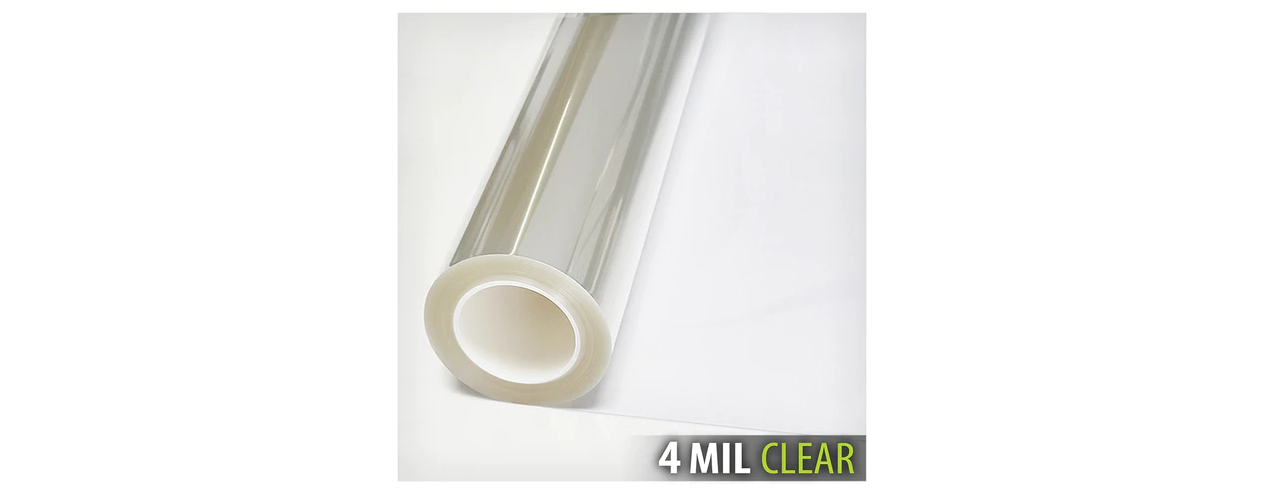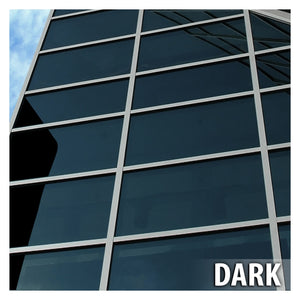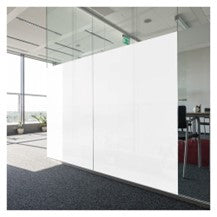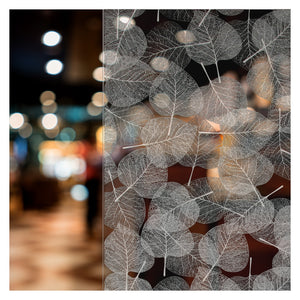Check out our Youtube video on how to install self-adhesive window film

How thick is window film, and what is a Mil?
Film Thickness and Tips for Thicker Films
Units of Thickness
- Mil
Window film thickness is commonly measured in a unit called mil. One mil is equal to 1/1000 inch.
Many of our films have a thickness of 1, 1.5, or 2 mil (not counting the backing liner attached to the film). Security and graffiti protection films tend to be thicker, having 4, 7, or 8 mil thickness.
Some customers may misunderstand “mil” to mean millimeter (mm). One millimeter is much thicker than one mil: since 1 inch is equal to 2.54 centimeters (cm), or 25.4 mm, 1 mil would equal to 0.0254 mm. Conversely, 1 mm is about 39.37 mil.
- Micron
When using the metric system, window film may be measured in a unit called micrometer, commonly referred to as micron. One micron (μm) is 10-6 meter, or 0.001 mm.
Therefore, 1 mil is equal to 25.4 microns, and 1 micron is approximately 0.03937 mil.
This unit conversion table shows the comparisons of these units (~ denotes approximations):
|
|
Inch |
Mil |
Centimeter |
Millimeter |
Micrometer (micron) |
|
1 in |
1 in |
1000 mil |
2.54 cm |
25.4 mm |
25,400 microns |
|
1 mil |
0.001 in |
1 mil |
0.00254 cm |
0.0254 mm |
25.4 microns |
|
1 cm |
~ 0.3937 in |
~ 393.7 mil |
1 cm |
10 mm |
10,000 microns |
|
1 mm |
~ 0.03937 in |
~ 39.37 mil |
0.1 cm |
1 mm |
1,000 microns |
|
1 micron |
~ 0.00003937 in |
~ 0.03937 mil |
0.0001 cm |
0.001 mm |
1 micron |
Tips for Using Thicker Films
There are some things to keep in mind when handling thick films.
- Size of Film Piece
Normally, when you cut window film to install a piece onto the window, we suggest having a small extra margin (about 1 inch). Once the film is put up on the window, the extra margin can be trimmed out.
Thicker films such as security films, on the other hand, are harder to trim from the window. These films should be cut to the size of the window in advance.
Tightly rolled films might not be laid perfectly flat after being unrolled. As a result, after you measure the film to the needed size and then cut it, the film piece might end up being slightly larger than what you intended. When this is an issue with a thick film that you are attempting to pre-cut to the window size, it can help to measure the piece a little bit smaller than the actual size you need (about 1/8 inch less than the window size).
- Curing Time
Security films can take a longer time to cure (dry) than ordinary window films. Whereas thinner films can dry in a few days, you may need to wait a few weeks for security films to dry completely. The curing time depends on the temperature and humidity; the film can take longer to dry in damp, cold environments.
Some customers have reported streak marks or a cloudy, foggy look appearing on the security film after it was installed. These can occur due to factors such as the temperature and the fact that the adhesive can be pushed around during the installation process. These are, however, expected to disappear as the film dries, so we recommend waiting a few weeks for these to go away.
- Bubbles and Squeegee Usage
With any window film, it is important that the soapy solution used during installation should be properly squeezed out with the squeegee once the film is up on the window. If there is soapy water left over between the film and the window, the moisture can interfere with the adhesive and cause bubbles to form soon afterwards, even if it was not apparent on the day of installation.
Bubbles can happen with any film, but they can pose a problem particularly for security films, due to the increased thickness that makes it harder to squeeze out the water. This necessitates applying more pressure with the squeegee than for thinner films.
A suggested tip is to first spray some soapy water on top of the film after it is on the window, before you apply the squeegee. This can help the squeegee glide over the film more easily. Note that the black felt side of the squeegee would ordinarily be used for this process; the other plastic or rubber side can be used when precision is needed, such as corners.
Bubbles should be prevented in advance. Unlike cloudiness or streaks, bubbles would likely not disappear once they form, unless they are small enough (those about 1/8 inch or less in diameter can disappear as the film dries). If there are bubbles in a few specific spots, you can use a needle to poke the bubbles and let the air out from the gap, helping that spot stick. However, for security films, this can weaken these spots.
- Tunneling
Sometimes a problem known as “tunneling” may arise from the remainder of a roll of a thicker film. This is when the clear backing liner pops off the film in some places, creating narrow tunnels consisting of line-shaped gaps between the liner and the film. This can lead to permanent visible line marks on the film, which will remain on the film after the liner is peeled off. Tunneling can happen with thicker films because of the difference of thickness between the film and the backing liner (which tends to be very thin).
To prevent tunneling, the thick film should be stored in a proper manner: if you have a remaining portion of unused film roll, it needs to be wrapped tightly enough and secured (with tape) to retain the tension.
For these reasons, thicker films can be more challenging to use compared to thinner films. Even among the security and graffiti protection films, the thicker versions can offer a stronger protection, but it can also increase the difficulty of correct installation.







